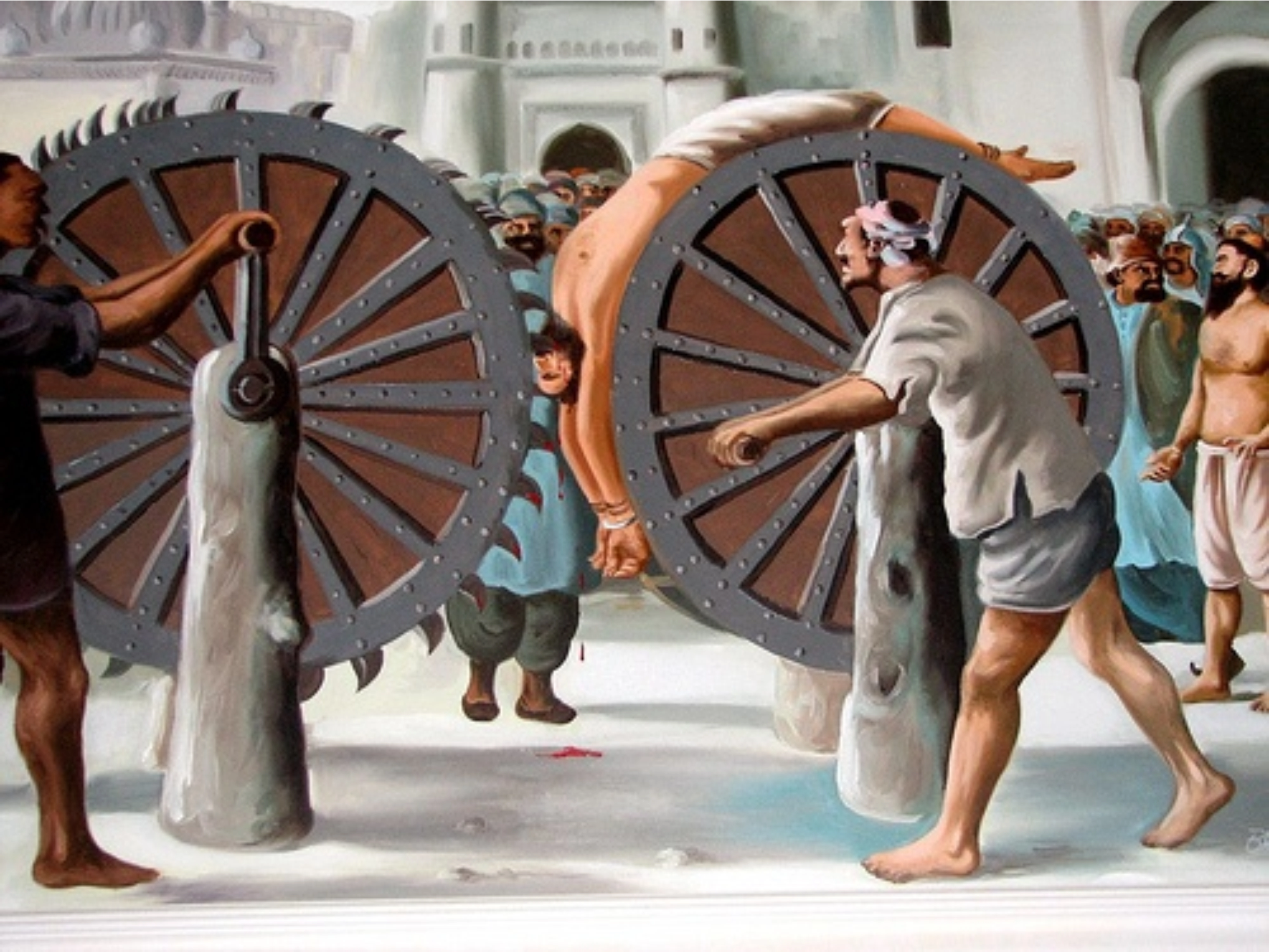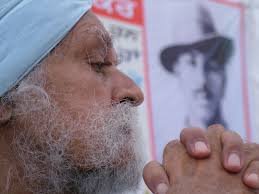Abstract:
Splintered Waters: Tryst with Destiny, a novel by Amarjit Pannu, is a work of historical fiction that focuses on the struggles of unsung revolutionaries from Punjab who fought for India's freedom from British rule. The novel is a historical fiction that explores the Gadhar movement, the freedom struggle, World War II, and the Partition. Pannu, a biotech-scientist-turned-writer, uses a creative lens to present a unique story while utilizing real people and historical events to enhance the novel's authenticity. The author skillfully blends facts and fiction, providing a vivid portrait of society during the nationalist movement. The novel is divided into six parts and 84 chapters, and its narrative is both engrossing and a creative way to convey history in a literary work.
Amarjit Pannu is a biotech-scientist-turned-writer who writes in English as well as in Punjabi. Several literary organizations in India and Canada have recognized her for her captivating storytelling. Her Punjabi story collection and science fiction are also very well received. Her maiden venture in English, Splintered Waters: Tryst with Destiny was published in 2021. It is a novel with deep insights which depicts the picture of colonial India. It is the true story of individuals from Punjab who fought tenaciously for freedom from British rule and follow in Kartar Singh Sarabha’s footsteps in order to free India from the yoke of slavery. It is a historical fiction which transports the readers to the times of Gadhar movement, freedom struggle, World War II and ultimately to the Partition. The spirit of nationalism and patriotism, as well as the epochal struggle for freedom, usually appears in historical fiction set during the colonial era. The genre of historical novel is notable for its focus on realism. The genre can also be taken as a serious reimagining of historical events. It also provides a well-developed historical backdrop for its people, locales, and events and Amarjit Pannu has given full justice to this genre by providing the minute historical details while narrating the story of two main characters- Hakam Singh and Lal Singh.
This novel illustrates the struggles of unsung revolutionaries who sought India's independence and carries a perfect balance of research and creativity. Amarjit Pannu has used real people and events to tell a wholly unique story. The author's references to the non-cooperation movement initiated by Mahatma Gandhi, Jallianwala Bagh massacre and the execution of sardar Bhagat Singh enhance the novel's authenticity. The core of Pannu’s tale is love: for the land, the people, traditions, customs, and liberty. One of the most impressive things is, it is a historical fiction but Historical explanations do not hamper the story's flow or bog down the reader. In spite of the 393 Pages of the novel, the story is so gripping that the reader cannot put down the book without reading it completely. While focusing mainly on the spirit of nationalism, Pannu has also pointed out some other social ills prevalent in the society of that time. Her ‘historical’ narrative evokes several issues- and come very close to ‘historiographic metafiction’- a coinage from Linda Hutcheon to describe the postmodern interaction/liaison of historiography and fiction.
Divided into six parts and 84 chapters and narrated by an omniscient narrator in a linear manner, it is an engrossing work and an epic saga that encompasses the struggle for independence, World War II, and eloquently captures the enormity and tragedies of the largest forced migration in human history during the partition of India and Pakistan. Amarjit Pannu has skillfully titled the novel as well as its six parts because they immediately draw the attention towards the story. For example, the first part is named as “The Obedient son.” The novel depicts the unbreakable friendship between Lal Singh and Hakam Singh who first meet in college and have the zeal for free India. Lal Singh being “the Obedient son” bowed before the expectations and wishes of his parents, left his university education and came back home. Rattan Singh, Lal Singh’ father was afraid of losing his son, the memories of the “ruthless massacre of more than a thousand men, women, and children, celebrating the holy festival of Baisakhi” in Jallianwala Bagh were engraved on his heart “like a permanent blister that erupted every time he heard the word revolution against the British Raj” (25). He forced Lal Singh to come back home and help him in the fields. Lal Singh’s helplessness was clearly visible in these lines when he was talking to Hakam, “I am ashamed of myself. I wish I was like you, strong and determined. I could not go against Bapu ji’s reasoning. And you don’t need cowards like me. But I will keep helping our cause financially though. I promise!” (40)
The second part, “The Exile,” describes the arrest and exile of Hakam Singh. While Lal Singh came back home, Hakam, on the other hand was determined and was ready to lay down his life for his country. The following statement of Hakam Singh in front of a large gathering clearly described his fearlessness and determination for freedom, “The British have ears but they do not hear. Their eyes look around, but only for gold. Their hearts beat in their chest but they have no empathy…. We will force open the ruler’s deaf ears so that they hear the voices of revolt. As our leader, Sardar Bhagat Singh says, ‘If the deaf is to hear, the sound has to be very loud.’ (30) He was transported to “Kala Pani” where along with other prisoners (freedom fighters), he was tortured to a great extent and regarded nothing more than “the scum of society” (125). Amarjit Pannu has written at length about the brutal treatment meted out to the political prisoners at “Kala Pani.” The jailors had very strict rules, disobeying which resulted in death only. Murderers and criminals were serving as Jamadars there and they were given all the rights to torture the freedom fighters. Pinta, who killed Rattan Singh and was also the murderer of his own father and his sister (Rupi) and her lover (Daulat) also became a jamadar in prison and he enjoyed torturing the prisoners. However, Hakam was new in the prison yet he rose to inspire the other prisoners with his velour and eloquence, “Brothers, we will die with dignity instead of being killed in disgrace and humiliation at the dirty hands of these criminals. We will die for justice and we will die for freedom. We shall fast unto death.” (136)
The next part, “The Departing soul” comprises the tragic death of Lal Singh and the poignant happenings to Namo and his daughter Pali after his death. While the fourth part, “The Homecoming” is devoted to the homecoming of Hakam after several years of imprisonment, he used to be “a spirited person, full of life.” But he came back home completely deranged as if “they took his soul away” (211). The fifth part, “World War II” describes the dilemma of Harjit How to tell a freedom fighter and a person enthused with patriotic fervor like Hakam that his own son Baldev has joined the British army and he is fighting for the Britishers who ruthlessly massacred thousands of people in Jallianwala Bagh and who tortured Hakam and several people like him in Jail, and his son Baldev is ready to lay down his life for them. She tried her best to stop Baldev but ultimately bowed her head before Baldev’s reasoning. He said, “We’re not fighting for one person or one race or even one country. We are fighting for the truth. We are fighting for the righteous… At the moment, the British are the righteous, not the Imperial army of Japan or Hitler of Germany. (235)
The last part of the novel after which this book is named “Splintered Waters” recounts the horrible events of the partition of India and Pakistan. A time when the entire Indian subcontinent was consumed by religious fervor and prejudice. Under the name of religion, humanity devolved into savages ever-willing to murder fellow humans. The love story of Badev and Pali described in this section is also very touching. The novel ends with the train reaching the platform with bodies and then Nehru’s speech resounded on the radio, “Long years ago, we made a tryst with destiny; and now the time comes when we shall redeem our pledge, not wholly or in full measure, but very substantially. At the stroke of the midnight hour, when the world sleeps, India will awake to life and freedom…” People looked at each other and think “What freedom? He calls it life. What ‘life’ does he talk about? It is death, not life” (393). These cruelly ironic words of Nehru blasting on the radio that “India will awake to life” when millions of people were being killed and thousands of women were abducted and raped, showcases the indifference of the political leaders to the sufferings of the common people and highlights their greed for power.
Besides this the novel also touches the issues of honour killing and caste distinction. The issue of honour killing is highlighted by Pannu through the character of Rupi and Daulat. Rupi, the daughter of a rich landlord (to whom Lal Singh was first betrothed) fell in love with Daulat, their servant and they used to meet daily in the maize fields. Until Pinta and Babbu, her brothers caught them one day and killed them mercilessly in the grove. Babbu tried to stop Pinta from killing Rupi but he said, “Do you want to be called the brother of a whore? Fucked by a low caste bastard, our servant, who lives on our shit?” (82). Lal Singh “the obedient son” emerged as a really strong character when he refused to marry Rupi, the daughter of a rich landlord and instead decided to marry a servant Namo, which is a shocking violation of class norms and an affront to the betrothed's deadly and vindictive brothers. The woman characters of the novel are also very strong. The wives of Lal Singh and Hakam Singh, Namo and Harjit, supported the men and their children and emerge from adversity with renewed vigor, perhaps reflecting the changes in the region. Their children bring their families together as a new India emerges.
Pannu presented Rattan Singh as a man with high principles and liberal thoughts. When Namo gave birth to a daughter. He proudly said, “When a son is born, the foundation of the house trembles with fear and uncertainty, whether he will strengthen it or pull it apart into pieces when he grows up. But, when a daughter is born, the foundation of the house heaves a sigh of relief because a daughter is always selfless and compassionate towards her parent’s home,” Rattan said sitting at the men’s gatherings (74). The author's engaging language and poetic descriptions create the rhythm of a thriving land. This can make one feel as though one had travelled to another world. Anyone can be captivated by the everyday lives and tactile nuances. One can actually inhales the aromas of spices and cattle, admires the vibrant colors and gleaming bangles, gazes out over the rich fields, travels in dusty buses, visits congested cities, and then returns to the tranquil countryside where Sikhs, Muslims, and Hindus have coexisted for decades.
In a really bold manner and using the strong vocabulary, she rebuked the top most leaders of that time and accused them of the murder of thousands of innocent people. Using a convincing blueprint of a revolution against colonial rule, World War II, and partition, the novel effectively painted a picture of the nationalist movement while also giving a vivid portrait of the society at the time. Facts and fiction are skillfully amalgamated in this novel and the inclusion of colorful and visually arresting real-life occurrences is intended to pique the reader's interest. The novel Splintered Waters is one of the finest examples of innovative narrative style which is deftly employed by the author Amarjit Kaur Pannu and she demonstrates that the structure of a literary work contributes a great deal to the better comprehension of historical events. This novel perfectly emphasizes that History can serve as a perfect setting for a literary work and a wholly unique story can be told by taking nuances from the history. She has excellently interwoven the happenings from Gadhar Movement to Partition of India and Pakistan without making the narrative boring and complicated. She creatively foregrounds the idea that experimentation can also be done while stating the history in a literary work.
_______________________________________
References:
- Hutcheon, Linda. A Poetics of Postmodernism History, Theory, and Fiction. New York:
- Methuen, 1988.
Pannu, Amarjit Kaur. Splintered Waters: Tryst with Destiny. New York: Austin Macauley - Publishers, 2021.
- Shaw, E. Harry. The Forms of Historical Fiction. United States: Cornell UP. Ithaca
- & London, 1982.
- White, Hayden. “The Historical Text as Literary Artifact.” Tropics of Discourse: Essays in
- Cultural Criticism. Baltimore: The John Hopkins University Press, 1986.
Agriculture & Industry
Applied Arts
Biographical Writings
Career & Skill Development
Children Books
Computers & Information Technology
Myths, Culture & Folklore
Economy & Finance
Education & Exams
Fine Arts
General Knowledge & Reference
Health & Wellness
History
Language & Linguistic Studies
Law & Criminology
Literature & Literary Studies
Media & Journalism
Medical Sciences
Motivation & Self Help
Performing Arts
Philosophy & Ideology
Politics & Political Science
Public Administration
Religion & Spirituality
Science & Engineering
Society & Social Sciences
Sports, Travel & Hobbies
India: National & State Concerns
